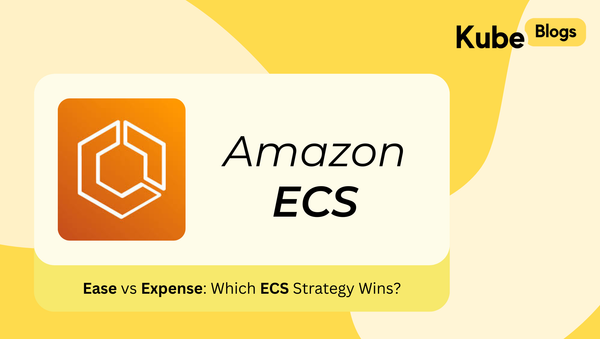Table of Contents
Kubernetes is a powerful platform for container orchestration, but managing it effectively requires the right set of tools.
These tools help to simplify tasks such as deploying applications, managing permissions, scaling services, and ensuring security.
Let’s explore ten essential tools that can greatly simplify Kubernetes management.
1. Stern
Stern is a powerful log aggregation tool that allows you to view logs from multiple Kubernetes pods in real-time. When debugging distributed microservices, manually retrieving logs from individual pods can be tedious and time-consuming.
Without Stern, you would need to run kubectl logs for each pod separately:
kubectl logs my-pod-1 kubectl logs my-pod-2 kubectl logs my-pod-3With Stern, you can tail logs from all pods that match a specific label, allowing you to view logs from multiple sources in a single stream:
stern my-appThis aggregation greatly improves efficiency when troubleshooting multi-pod applications.
2. RBAC Manager

Role-Based Access Control (RBAC Manager ) is critical for managing permissions and access within a Kubernetes cluster. As your team grows, manually assigning roles and permissions for each user can become error-prone and difficult to manage. RBAC Manager simplifies the process by automating the creation and application of roles and bindings across your cluster.
Without RBAC Manager, you'd need to manually create Role and RoleBinding objects for each user or group:
apiVersion: rbac.authorization.k8s.io/v1
kind: Role
metadata:
namespace: dev
name: dev-role
rules:
- apiGroups: [""]
resources: ["pods"]
verbs: ["get", "list", "watch"]RBAC Manager allows you to define permissions centrally, and they are automatically applied across namespaces:
apiVersion: rbacmanager.reactiveops.io/v1beta1
kind: RBACDefinition
metadata:
name: dev-rbac
rbacBindings:
- name: "Dev Team"
subjects:
- kind: User
name: dev-user
namespace: dev
roleBindings:
- clusterRole: view
namespace: devThis ensures consistent role management across the cluster, reducing administrative overhead.
3. Helmify
Helmify simplifies the process of converting raw Kubernetes manifests into reusable Helm charts. When managing large applications, manually creating Helm charts from scratch can be labor-intensive and prone to mistakes. Helmify automates this process by converting existing manifests into a Helm chart, making it easier to standardize deployments.
Without Helmify, you'd need to manually write templates for each resource, a time-consuming process:
kubectl apply -f deployment.yaml
kubectl apply -f service.yamlHelmify streamlines this by converting Kubernetes resources into Helm charts automatically:
helmify my-appSee examples of charts generated by helmify.
4. kubectx & kubens


kubectx and kubens are tools that simplify managing multiple Kubernetes clusters and switching between namespaces. They save time by allowing you to quickly switch contexts and namespaces without typing long kubectl commands.
Without kubectx, you would need to switch contexts manually:
kubectl config use-context <context-name>With kubectx, you can switch clusters easily:
kubectx <context-name>Similarly, kubens allows you to switch namespaces with one command:
kubens <namespace>These tools make managing multiple clusters and namespaces far more efficient.
5. K9s

K9s provides a terminal-based UI to interact with your Kubernetes clusters. It simplifies navigating resources, viewing logs, and monitoring services all in a single interface, offering a more user-friendly experience than using kubectl alone.
With K9s, instead of typing out individual kubectl commands, you can view pods, logs, and other resources in real-time through an intuitive interface:
k9sK9s makes managing Kubernetes clusters more visual and accessible.
6. KEDA

KEDA (Kubernetes Event-Driven Autoscaling) is a Kubernetes-based event-driven autoscaler. It allows applications to scale based on custom metrics and external event sources, beyond just CPU or memory usage.
Without KEDA, scaling based on custom events would require custom logic and manual intervention:
kubectl scale deployment my-app --replicas=5With KEDA, you can scale deployments based on metrics from various event sources such as message queues:
kubectl apply -f keda-scaledobject.yamlKEDA makes scaling Kubernetes workloads easier and more flexible by enabling event-driven autoscaling.
7. K8sGPT

K8sGPT is an AI-powered diagnostic tool for Kubernetes. It helps troubleshoot cluster issues by analyzing your cluster's state and providing recommendations to fix misconfigurations or performance bottlenecks. Whether you're facing pod failures, networking issues, or deployment problems, K8sGPT can assist by running automated diagnostics.
With K8sGPT, you can run simple commands to get detailed reports on your cluster’s health:
k8sgpt analyzeK8sGPT helps you identify and resolve issues faster, especially when dealing with complex Kubernetes environments.
8. iTerm2 AI Plugin

iTerm2 is a popular terminal emulator for macOS, and its AI plugin can assist with generating kubectl commands based on natural language prompts. For example, if you're unsure of the exact syntax for a Kubernetes operation, you can simply open a prompt in iterm and type in
Generate a command to list all pods in the 'production' namespace.The AI plugin will provide the correct command:
kubectl get pods -n production
iTerm AI plugin can be used to generate commands for any other cli tool as well so it’s a must have.
Conclusion
Kubernetes management can be simplified with the right tools. These tools reduce manual effort, increase security, and make scaling much more flexible. From managing permissions with RBAC Manager to scaling workloads with KEDA, each tool brings unique value, making Kubernetes easier to manage and more powerful to use.
At KubeNine, we specialize in helping organizations get the most out of Kubernetes by integrating these essential tools into their workflows. Our goal is to enable smooth, secure, and efficient Kubernetes environments so you can focus on what matters most—building great applications.






